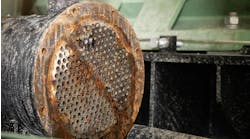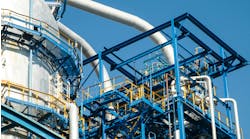Most plants that operate for long periods between shutdowns install spare pumps to achieve reliable operation. When an in-service pump fails or requires maintenance, the plant will start the installed spare to maintain operations. However, equipment that sits on standby for months often fails to start or run reliably.
Keeping a spare pump available for quick, reliable startup requires a combination of factors. First, the pump must run a minimum amount of time. Prolonged inactivity in pumps can lead to various issues, including the transmission of vibrations from the adjacent pipes and foundation through the same bearings and surfaces. Periodic operation of the pump alters the positions of these bearings and loaded surfaces, contributing to uniform wear and enhancing the pump's reliability.
Also, lack of operation can lead to the settling of lubricants and seal fluids, resulting in the formation of dry zones within the machinery. This increases pump wear upon startup and reduces reliability. Another common problem is the lack of circulation through the lubricant system, including filters and coalescers. This can lead to the build-up of impurities.
At minimum, most pumps should have a scheduled in-service period at least every six weeks. Every four weeks would be better. Addressing this issue can be particularly complex in plants that have undergone modifications to increase capacity. These facilities often upgrade the primary pump but not the spare pump. In these situations, the spare pump may exhibit a significantly lower capacity or head. Maintaining capacity while running the spare may require having both pumps in service rather than just one. This can create problems due to low flow rates on the spare pump.
Second, plants must maintain the pump at the right temperature to reduce thermal stress at startup. If the operating condition deviates significantly from ambient temperature, the pump should have warm-up circulation .
Generally, warm-up flows are required when the pump operating temperature is more than 200°F away from ambient conditions. The larger the pump size and coefficient of thermal expansion of the metal, the more critical it is to keep the pump standby temperature close to normal temperatures. Otherwise, it may take a considerable amount of time to warm up the pump for service.
Warm-up flows recycle a flow from the in-service pump discharge to the spare pump suction. Because this is a recycle flow, the warm-up flow sacrifices both capacity and energy. However, it’s necessary for maximum reliability. Good insulation around the pump and the associated piping can minimize these losses. Often, operators can adjust the warm-up flow in the field with a manual globe valve.
For horizontal pumps, warm-up connections should be on the bottom of pump suctions lines. The warm fluid rises as it goes through the pump, keeping the temperature profiles through the standby pump as even as possible.
Warm-up systems are often confused with cold-protection systems. In some cases, they may replace the cold protection (or anti-freeze system), but most of the time they function alongside the cold-protection system. The cold-protection system is designed to prevent freezing due to upsets, low flow or extreme weather conditions. These events often occur with unplanned shutdowns. During a plant upset, it’s possible that no warm-up fluid may be available.
That’s why it’s important to ensure a warm-up flow for any pump susceptible to thermal stress when starting from ambient conditions. Also, any pump system that could freeze due to transient conditions or extreme weather should have freeze protection. Many pumps will require both types of protection to optimize reliability in anticipation of unpredictable conditions or disruptions.
The reliable operation of pumps in plants that run continuously between shutdowns hinges on a careful balance of factors. Regular operation, appropriate warm-up flows and freeze protection measures are all vital components in maintaining pump reliability. By addressing these considerations, plants can minimize downtime and ensure the uninterrupted functioning of their crucial pump systems, even in the face of unforeseen events.



